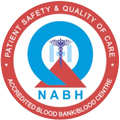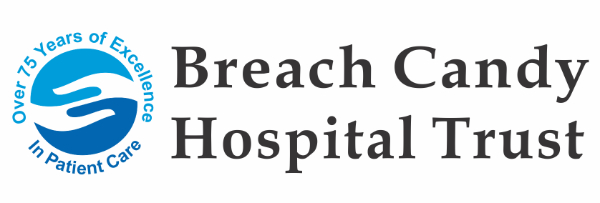Patient Safety and Education
Lactation Management
- At Breach Candy Hospital Trust, we take the initiative to prepare you to enter your life’s greatest adventure –Motherhood- give your baby the best possible gift ever –Breast Feeding.
- With the dawn of new millennium, breastfeeding has taken a very critical role in child and maternal health, so learn the art of Correct Breast Feeding, in our “Lactation Management Programme”.
- Our team of Lactation experts visit each delivered mothers daily in wards to train and supervise the breast feedings of all new mothers.
Highlights
- How to get the perfect latch.
- How to prevent breast related issues like engorgement, lump in breast, cracked nipples etc.
- How to recognize early feeding problems.
- How to know that your breast-milk is adequate for your baby.
- What is the correct breast feeding technique.
- Personal hygiene during antenatal period and postnatal period.
- Importance & correct technique of Hand hygiene while handling the newborn.
A fall is defined as an event which results in a person coming to rest inadvertently on the ground or floor or other lower level. (WHO) The overall risk of patient falling while hospitalized is relatively small 2-3% but data shows that when patients do fall injuries often occur.
For Patient
Factors that can increase your risk of falling:
- Past history of a fall.
- Poor balance when walking, vertigo, dizziness.
- After any surgery or procedure.
- Decreased muscle/ bone strength, generalized weakness.
- Reduced vision or hearing.
- Drop in blood pressure with standing.
- Diseases such as arthritis, stroke.
- Slippery floors, ill fitting footwear.
- Dementia, confusion.
- Bladder difficulties, frequency of urination.
What patient/family can do to prevent falls at home:
- Eat well, stay fit and use walking aid as recommended by your Doctor Take medications as prescribed.
- Rise slowly from bed/chair to prevent sudden drop in blood pressure and dizziness (tell doctor if this occurs).
- Do not rush when walking/using stairs.
- Have solid handrails on both sides of stairwell.
- Ensure pathways in the home and outside (steps, sidewalks) are dry, well lit, and free of clutter.
- Avoid walking on slippery surfaces.
- Remove scatter rugs/mats.
- Install appropriately placed grab bars for toilet and tub/shower.
- Optimize chair and toilet seat heights.
- Use a well secured rubber bath mat in tub and shower.
- Ask others for help with tasks that would put you at risk of falling.
- Use correct eyeglasses/hearing aids and have vision/hearing test.
For Maternity
Dear Mothers you may be at short term risk of Fall following a normal or cesarean delivery and especially during initial attempts at ambulation post delivery The staff provides routine care post delivery – and instructions to new mother/parent on how to obtain assistance when getting in/out of bed, going to the toilet and moving your neonate/baby from cot to you for cuddling or feeding purposes.
Factors that can increase your risk of following:
Pre-birth fall risks in women can include:
- Pre-existing maternal medical conditions (high risk pregnancies).
- Seizure disorders, convulsions, antepartum hemorrhage (APH).
- Low blood pressure and diabetes.
- Medications for pain or sedation (affecting level of consciousness, balance, cognition and sleep).
- Epidural Anaesthesia.
Post-birth fall risks in woman can include:
- Fatigue following delivery.
- Post-cesarean section.
- Ongoing effects of anaesthesia e.g. epidurals boluses given for long duration.
- Hypotension and blood loss from a post-partum hemorrhage (PPH).
- Wearing badly fitting footwear.
Tips for safe handling of your newborn baby At home:
- Place your baby on their back while asleep in their safe cot next to your adult bed.
- Don't fall asleep while holding your baby as they can slip from your hold
- Never leave your baby unattended on an adult bed or other surface from which they may slip or fall.
- Ask for assistance, when moving your baby from their own safe cot if you feel at risk of sleeping.
- Walking with your baby in your arms is not encouraged its is advised to transport in a wheel bay cot/crib.
- Take extra care when changing nappies and bathing your baby. These are situations where your baby may fall or slip.
- Please let your visitors know it is important to move your baby only in their wheeled baby cot/crib.
- Ensure your room is clutter free and all your required items are placed within your reach.
- Ensure that your bed is at the lowest with side rails raised up especially when you are sleeping with your baby.





